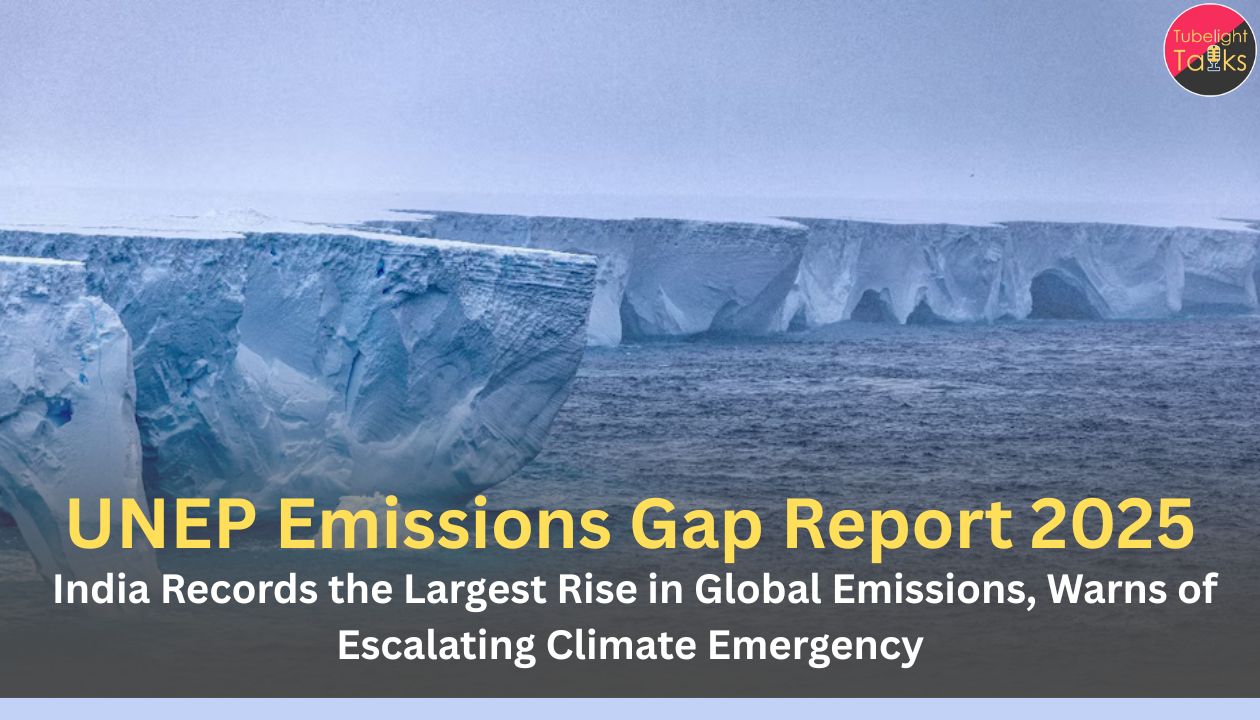India’s Q2 FY26 GDP: Mark your calendars: India’s National Statistical Office (NSO) will publish the Q2 FY26 (July–September 2025) GDP at 4:00 pm IST on Friday, November 28, 2025—as stated in MoSPI’s Q1 press note. That release follows a 7.8% year-on-year surprise in Q1 FY26. Since then, IIP for September printed 4.0% and Eight Core Industries grew 3.0%, while global forecasters and street polls peg full-year growth near 6.6–6.8%.
This explainer lines up the date, the baseline from Q1, the high-frequency clues inside Q2, and the policy lens (RBI/IMF)—so your newsroom can pre-build clean copy and charts, and then drop in the official number on the day.
Release Date & Where the Number Will Appear
MoSPI’s Q1 FY26 press note clearly states: “The next release of quarterly GDP estimates for the quarter July–September of FY 2025-26 (Q2) will be released on 28.11.2025.” As always, the PDF will hit the MoSPI/NSO site at 4:00 pm IST and will carry headline Real GDP, Nominal GDP, GVA by industry, deflators, and the “next release” footer. Build your pages to pull numbers from the PDF’s first two tables; Annexes give sectoral detail.
What “Q2 FY26” covers
Q2 spans July–September 2025. That means September IIP and Core are in-period indicators, while October PMI is post-period (useful for Q3 color, not for Q2 arithmetic).
The Baseline: Q1 FY26 Surprised to the Upside
NSO reported 7.8% real GDP growth in Q1 FY26, handily beating consensus (poll medians ~6.7%). The upside was driven by resilient domestic demand and services strength; it also helped prompt upgrades from several agencies. Keep Q1’s base in mind when interpreting Q2: a strong base often tempers the subsequent y/y rate unless sequential momentum is exceptional.
Why Q1 matters for your Q2 angle
- Narrative continuity: Q1’s beat shifted FY26 expectations higher (RBI to 6.8%, IMF 6.6%), so a solid but lower Q2 is still consistent with a 6.6–6.8% year.
- Deflator watch: With wholesale prices soft through mid-year, the GDP deflator likely remained subdued; that can widen the real-nominal gap and color corporate revenue vs GDP comparisons. (Editors: contrast nominal GVA with real GVA for services.)
High-Frequency Clues Inside the Q2 Window
Industrial Production (IIP)
September IIP rose 4.0% y/y, with manufacturing up 4.8% and electricity 3.1%; mining dipped marginally. Averaging July–September, IIP implies moderate factory momentum—not a blockbuster quarter, but no stall either. For copy, cite the PIB/MoSPI IIP note and avoid app screenshots.
Eight Core Industries (upstream supply pulse)
The Core basket grew 3.0% in September, with steel, cement, electricity, fertilizer positive—useful upstream signals for construction and capex-linked GVA. Month-to-month volatility remains, so stick to the official DPIIT/PIB release while noting that the ICI covers eight sectors, not the entire IIP.
Taxes & the demand lens (GST)
While GST is not part of GDP math, buoyant collections often rhyme with activity. FY25 closed at a record ₹22.08 lakh crore, and October 2025 (just after Q2) posted ₹1.96 lakh crore—supportive of demand resilience into the festive quarter. Don’t present GST as a predictor; use it as context.
Surveys (post-period but helpful)
The HSBC/S&P Global manufacturing PMI accelerated to 59.2 in October, highlighting strong momentum as Q3 began. For your Q2 write-up, park PMI in a “What next” box for continuity into Q3.
The Forecast Grid: What Economists Are Saying
- Reuters poll (Oct 27): Median FY26 growth ~6.7%—implied Q2 around mid-6s would still fit that path after a hot Q1.
- IMF (Oct 14): 6.6% for FY26—momentum seen offsetting trade headwinds.
- RBI (Oct 1): 6.8% FY26 with inflation cut to 2.6%—policy supportive, but watch core services stickiness.
- S&P / Deloitte: FY26 around 6.5–6.9%, citing domestic demand and benign oil.
Copy tip: Be explicit that only NSO’s PDF is the official Q2 number; polls are context, not substitutes. Quote one poll line, one institutional forecast, and the MoSPI date.
What to Check Inside the PDF
1) Real vs Nominal
Note the headline real GDP y/y and nominal GDP y/y. If the deflator is soft (as wholesale data suggest), nominal may not surge despite decent real growth—handy to reconcile with corporate sales.
2) Demand components
Scan PFCE (consumption), GFCE (government), GFCF (investment) and Net Exports. Investment’s share and growth rate drive your “capex revival” graf; PFCE aligns with retail/auto anecdotes; net exports can swing if non-oil deficit widened. (Use press-conference lines or later supply-use tables for detail when available.)
3) GVA by industry
- Manufacturing: Cross-check with IIP; a 4–5% IIP backdrop often maps to low-mid single-digit manufacturing GVA unless margins widened.
- Construction: Watch for alignment with cement/steel and Core—a strong marker of domestic demand.
- Services: Trade/Hotels/Transport and Financial/Real Estate/Professional often anchor the print; contrast with credit and services PMI where relevant (context only).
4) Revisions
The back series sometimes moves. If Q1 gets revised, it changes your base and flavor of the Q2 story—flag it.
Scenarios for Your Nov 28 Headline
Scenario A — “Q2 Holds Near 7%”
- Narrative: Domestic demand + construction/services stay firm; deflator soft; investment momentum visible.
- Policy: Supports RBI’s 6.8% FY26 call; keeps optionality for 2026 easing if inflation stays at ~2.6% path.
- Copy: “Q2 GDP ~6.8–7.0% y/y; investment & construction lead; deflator soft; FY26 on track.”
Scenario B — “Mid-6s and Stable” (base case)
- Narrative: Services solid; manufacturing moderate; Core/IIP signal an okay quarter; real GDP ~6.3–6.7%.
- Policy: No immediate change—neutral stance justified; markets look to Q3.
- Copy: “Q2 GDP mid-6s; momentum intact; FY26 still 6.6–6.8%.”
Scenario C — “Soft Surprise <6%”
- Narrative: Export drag + weak manufacturing; deflator quirks hit nominal; consumption slower.
- Policy: Raises questions on growth durability; watch RBI commentary in December.
Risks & Wild Cards to Your Draft
- Trade headwinds: Elevated U.S. tariffs add mild drag; most agencies still see >6.5% FY26. Keep your trade line in the “risks” box, not in the headline unless net exports crater.
- Weather & food: Food deflation and base effects helped CPI; if they also squeezed nominal via deflator, real-nominal gaps widen. (Ground this with MoSPI deflator math after release.)
- Policy timing: GST rationalisation and capital-expenditure schedules can shift quarterly flavor—consider in your analysis, cite PIB where applicable.
What It Means for Households & Businesses – If Q2 Lands in the Mid-6s
- Households: A steady growth print with very low CPI keeps real incomes supported; purchasing power depends more on price dynamics than headline GDP.
- SMEs: Capex-linked sectors (construction materials, logistics) benefit from continued public spending; watch working-capital cycles if nominal stays subdued.
- Investors: A mid-6s GDP keeps the RBI 6.8% path credible; curve trades will key off inflation and any growth surprises rather than the base case.
What to Watch Next (Beyond Q2)
- October PMI 59.2 hints at a brisk start to Q3; combine with festive GST to frame your December macro.
- IIP/Core October (due later) will tell you whether factories lifted post-festival.
- NSO revisions: Always re-base your chart pack after each release.
Growth with Responsibility (values that keep the numbers real)
Strong GDP matters because it shows up in kitchen budgets and payrolls, not just in charts. But durable prosperity also depends on fair dealing—from truthful invoicing to paying vendors and workers on time. When companies invest and hire with integrity, the multiplier is larger: confidence rises, leakages fall, and growth becomes more inclusive.
Ethical conduct, as described by Enlightened Sant Rampal Ji Maharaj, in everyday business – honesty, non-exploitation, and responsibility – acts like unseen infrastructure for the economy, stabilising the cycle when headwinds hit. Values-first choices at work and in markets are how impressive numbers turn into lived well-being for families and communities.
Also Read: India’s GST Hits ₹1.96 Lakh Crore: What Drove It and Why It Matters
Be Ready for Nov 28—And Ready to Explain It
Build once, update fast
- Bookmark the source: MoSPI/NSO Q2 FY26 GDP drops Nov 28, 4 pm IST; stage your template for headline Real/Nominal, GVA by industry, and demand components (PFCE, GFCF, GFCE, NX).
- Context cards: Pre-attach IIP 4.0% (Sept) and Core +3.0% (Sept) tiles with PIB links.
- Consensus line: Keep one compact sentence (RBI 6.8%, IMF 6.6%, Reuters 6.7% FY26).
- Explainers: Include a deflator box (why nominal ≠ real), and a revisions footnote.
- SEO adds: Use keywords in title, intro (first 100 words), and alt-text.
FAQs: India GDP Preview (Q2 FY26)
Q1. When will NSO publish India’s Q2 FY26 GDP?
On Friday, November 28, 2025 at 4:00 pm IST, per MoSPI’s Q1 press note.
Q2. What did Q1 FY26 print—and why does it matter?
7.8% real GDP, which lifted FY26 expectations; Q2 will likely be lower on base effects but still consistent with a 6.6–6.8% year if momentum holds.
Q3. Which indicators inside Q2 should I cite?
IIP (Sept) +4.0% and Eight Core (Sept) +3.0% are in-period clues; use the PIB/MoSPI notes as sources.
Q4. What is the FY26 growth consensus now?
Roughly 6.6–6.8%: IMF 6.6%, RBI 6.8%, Reuters poll ~6.7%.
Q5. How should I explain real vs nominal GDP to readers?
Real strips out price changes; nominal includes them. With a soft GDP deflator (wholesale prices mild), real can look strong even if nominal doesn’t surge—so contrast both in your piece. (Confirm with the Q2 PDF.)
Q6. Where can I find official historical charts?
MoSPI hosts a Quarterly GDP Growth Rates visualization and each quarter’s PDF archive. Cite MoSPI, not third-party sites, for your time series.










